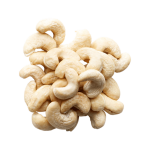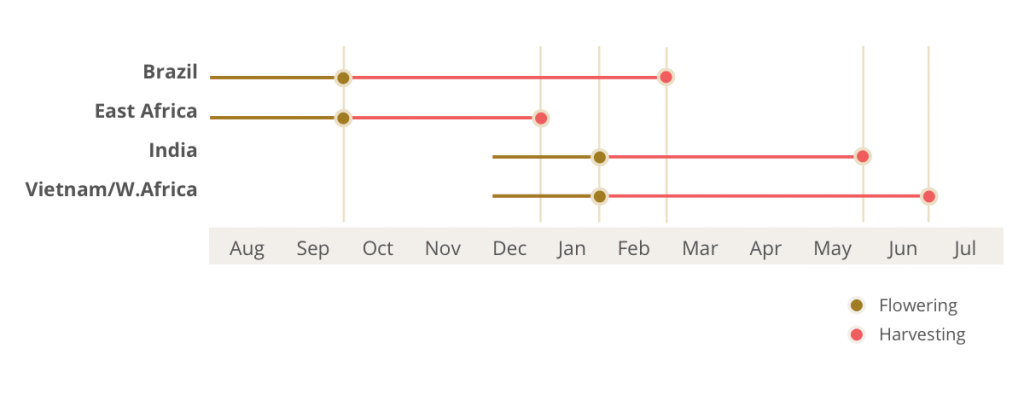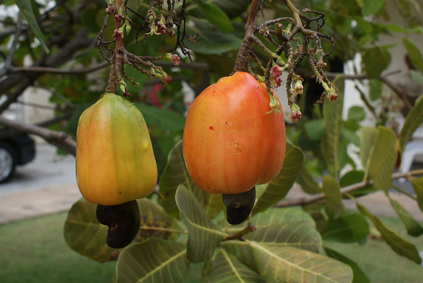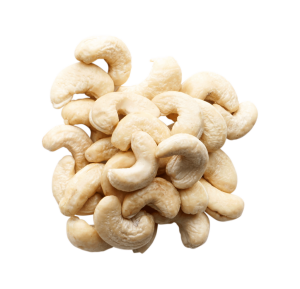CASHEW INFORMATION

The cashew tree grows in tropical areas with an annual rainfall ranging from 400 to 4,000 mm, and it grows from sea level to an altitude of 1,000 m. The Cashew is cultivate primarily in India, Vietnam, Côte d’Ivoire, Guinea-Bissau, Tanzania, Benin, Brazil and other countries in East and West Central Africa and South East Asia. Plantings have also been established in South Africa and Australia.
Cashew (Anacardium occidentale L.) belongs to the Anacardiaceae family, which includes about 60 genera and 400 species, among mango (Mangifera indica L.) and pistachio (Pistacia vera L.) are also included. Cashew trees are evergreen and can grow rapidly up to 20 m, but usually reach 8-12 m height. Anacardium occidentale L. is an andromonoeic species, with male and hermaphrodite flowers on the same plant and in the same panicle.
Overview of Cashew Production
World production of cashews currently ranges between 720,000 and 790,000 metric tons (kernel basis) per year (seasons 2015/16-2019/20). India, with 170,000-195,000 MT of annual production, ranks first, followed by Côte d’Ivoire, Vietnam and Tanzania averaging 149,000; 82,000 and 53,000 MT, respectively.


Seasons
Flowering takes place from December to April in the Northern hemisphere, and from June to December in the Southern hemisphere, with a higher concentration from September to November. The cashew has crossed fertilization.
About a week after fertilization, the green nut with a puny apple (false fruit) appears. The nut rapidly grows till it reaches almost 80% of its final size. The fruit starts growing to become wider and apple-shaped after the nut attains its full size. The apple has a thin green skin and as it matures the color turns red or yellow and becomes fragrant.
Meanwhile, the nut’s shell becomes hard and turns grey in color and the kernel grows within the nut. Nut and apple fall to the ground when fully mature. The time for fruit maturity varies from 2-3 months depending on the variety, the health of the tree, and the climate conditions during fruit growth.
Harvest takes place during dry weather and nuts are harvested only when the apples are fully ripe. Three to four flowering and fruiting in a 3-4 month horizon makes multiple harvesting necessary. The nut remains firmly attached to the apple and consequently the bulk of the harvest consists of the cashew apples.

The chart shows the higher concentration months of flowering, but the flowering season can be longer depending on the tree variety and the zone.
Overall harvesting seasons are similar in the producing countries, depending on the location relative to the equator. Countries north of the equator, including India, Vietnam, and West Africa, start harvesting early in the calendar year until aproximately mid-year. Countries soth of the equator, including Brazil and East Africa, harvest from September or October to early in the following calendar year.
Tree Products
The cashew tree produces a soft, shiny and juicy fruit, known as cashew apple which bears a single-seeded nut in its bottom covered with a hard grey shell. This nut is the most valued product and is commonly consumed as snack or used in confectionery and cooking.
The cashew apple’s juice is mainly used to make drinks, both natural and fermented. Furthermore, the fruit pulp can be made into jelly, syrup, candied fruit and preserves. The cashew apple juice is rich in vitamin C, antioxidants, minerals and sugars.
The liquid enclosed in the shell of the nut (cashew nut shell liquid, CNSL) is commonly used for industrial purposes. The liquid is nocuous, contains cardol and anacardic acid and has polymerizing and friction-reducing properties. It is used in many industrial processes in developing lubricants, varnishes, cements, drugs, antioxidants and fungicides among other uses.


FAQ's
World production of cashews currently ranges between 720,000 and 790,000 metric tons (kernel basis) per year (seasons 2015/16-2019/20). India, with 170,000-195,000 MT of annual production, ranks first, followed by Côte d'Ivoire, Vietnam and Tanzania averaging 149,000; 82,000 and 53,000 MT, respectively.
Food operators have to implement preventive measures to avoid or minimize the possibility of cross-contamination in the framework of their Hazard Analysis Critical Control Point (HACCP) plan, and food manufacturers must clearly label any product that contains an allergen. The use of dedicated equipment, part of the equipment or tools for the production with allergens is recommended, specially if they are not easy to clean. If it is not possible to use a dedicate line or equipment, there are other options such as performing specific cleaning and organizing the production taking into account the allergen content. The preventive measures, in particular the specific cleaning procedures, have to be validated to ensure their efficacy.
1. Europe, F.D. (2013). Guidance on Food Allergen Management for Food Manufacturers.

